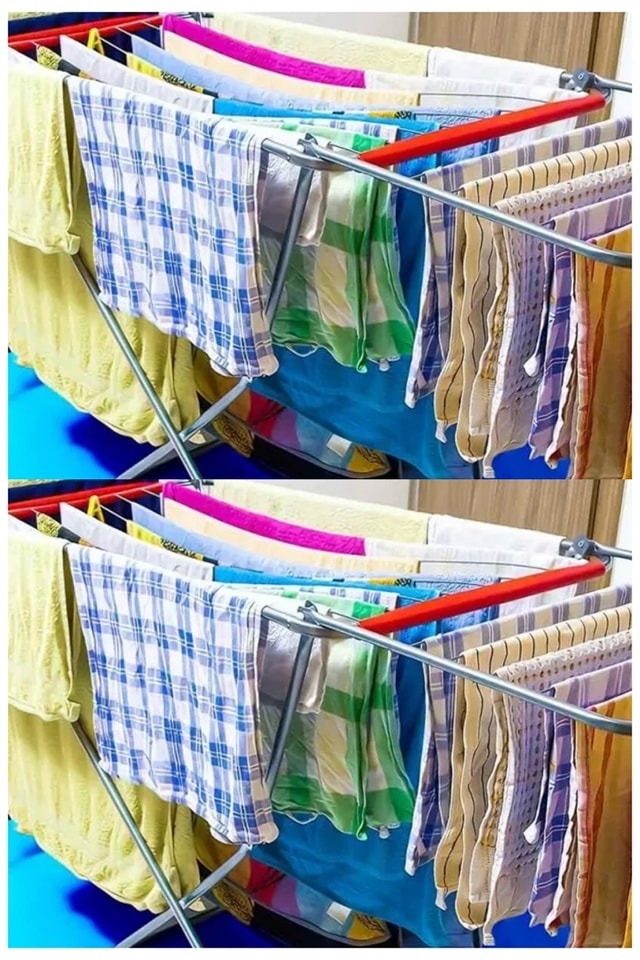Using a heat source can speed things up, too! Pop your drying rack in front of a radiator, a warm oven, or even a fireplace (with caution!). Just make sure that your clothes aren’t too close together – they need good air circulation to dry effectively, and you want to avoid any unwanted damp smells.
Remember: If you’re using a stove for heat, keep that room well-ventilated to avoid mold!
🏠 Finding the Perfect Drying Spot
It’s essential to find a spot in your home that’s not too humid for drying. If every room seems a bit damp, the bathroom, with its radiator and shower warmth, might be your best bet. But do make sure to dehumidify the room as much as possible for optimal drying conditions.
If you’re in need of a dehumidifier, did you know you can DIY one using salt? Just:
Put 150g of coarse salt in a bowl and let it chill in the fridge overnight.
The next day, put the salt into a funnel (or a plastic bottle).
Place it in the humid room and wait a few days for it to work its magic, absorbing that excess moisture.
Replace the salt once it’s dark or very wet, ideally every four days.
And don’t forget to air out the room daily! It’s crucial to keep the air fresh and avoid damp odors.
🌿 A Few More Anti-Humidity Tips
Continue Reading in next page

